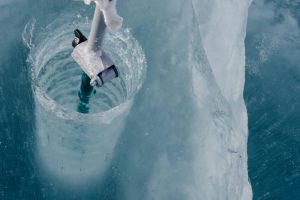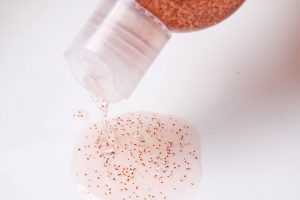Plastic waste is one of the worst environmental problems that the planet faces. Smaller plastic pieces that are less than five millimeters in length are called microplastics. They might be the worst of all plastics in terms of harming the planet.
Scientists only recently became aware of the extent of the pollution issue with microplastics. Researchers still aren’t sure how widespread the problem is or how to deal with it. That alone is an indication that microplastics might be a bigger problem than anyone at first anticipated.

Recently, microplastics were found in the Arctic ice, a development that scientists called a “punch in the gut.” That’s because its presence in the ice indicates how widespread pollution could be and the potential for harming marine animals.
The microplastics were found by drilling out core samples as deep as 6.5 feet into the ice. A scientist told Reuters, “ The plastic just jumped out in both its abundance and its scale.”
 It was a second blow to the environment in 2019. Earlier in the year, submarines discovered plastic in the deepest place on Earth, the Pacific Ocean’s Marianas Trench.
It was a second blow to the environment in 2019. Earlier in the year, submarines discovered plastic in the deepest place on Earth, the Pacific Ocean’s Marianas Trench.
Most scientists now believe that pollution from plastics, including microplastics, has reached epidemic proportions. The United Nations estimates that 100 million tons of plastic have been dumped into the world’s oceans – so far.
According to the National Oceanic and Atmospheric Administration (NOAA), microplastics come from many different sources. Some are larger plastic pieces that have degraded over time.
 However, many are microbeads, which “are very tiny pieces of manufactured polyethylene plastic that are added as exfoliants to health and beauty products, such as some cleansers and toothpastes,” according to NOAA.
However, many are microbeads, which “are very tiny pieces of manufactured polyethylene plastic that are added as exfoliants to health and beauty products, such as some cleansers and toothpastes,” according to NOAA.
These particles are so small that they easily pass through water filtration systems. It’s worth noting that green products do not use microbeads.
Microbeads also can get airborne. German and Swiss scientists say they have evidence that microparticles are blown for many miles by the wind and drop during snowfall. In other words, in some parts of the world, it’s snowing plastic.
While the issue of microplastics pollution is relatively new, the use of microplastics is not. Manufacturers began replacing natural ingredients with plastic particles 50 years ago, according to NOAA.
Expect the issue of microplastic to receive more attention in the coming years as scientists look for a way to assess the damage, as well as possible methods for clearing it up. For now, it’s another troubling issue in a mounting number of threats to the global environment that are manmade.